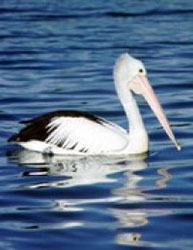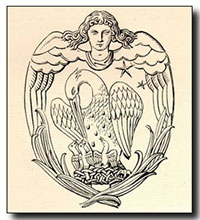
The Resurrection and the pelican.
I often ride my bike by Swan Bay, sometimes with my granddaughter on the back. We pause and watch the pelicans, as in the photo below!
 As you may know, the Resurrection symbolism of the mother pelican feeding her little baby is rooted in an ancient legend that, in time of famine the mother pelican wounded herself then fed her dying young with her blood to revive them from death, but in turn lost her own life. Early Christians adapted this to symbolise our Lord, Jesus Christ. The pelican symbolizes Jesus our Redeemer who gave His life for our redemption. Thus the pelican became a symbol of the Resurrection
As you may know, the Resurrection symbolism of the mother pelican feeding her little baby is rooted in an ancient legend that, in time of famine the mother pelican wounded herself then fed her dying young with her blood to revive them from death, but in turn lost her own life. Early Christians adapted this to symbolise our Lord, Jesus Christ. The pelican symbolizes Jesus our Redeemer who gave His life for our redemption. Thus the pelican became a symbol of the Resurrection
In the 14th century Divine Comedy, the wonderful poet Dante, baptised in Florence, refers to the Risen Jesus as “our pelican”.
 Some of you will have therefore seen the pelican on altar frontals as we kneel for Communion and are fed, as Jesus promised at the Last Supper. “This is my Body … This is my Blood.”
Some of you will have therefore seen the pelican on altar frontals as we kneel for Communion and are fed, as Jesus promised at the Last Supper. “This is my Body … This is my Blood.”
As the pelican swims on Sawn Bay, one is drawn to meditate afresh on the Risen Jesus’ wonderful Easter promise of abundant and eternal life.
I don’t know whether Athanasius (c296) ever saw pelicans floating by, but what he said is true forever:
“We are an Easter people, and Alleluia is our song!”
Bishop Philip Huggins
President